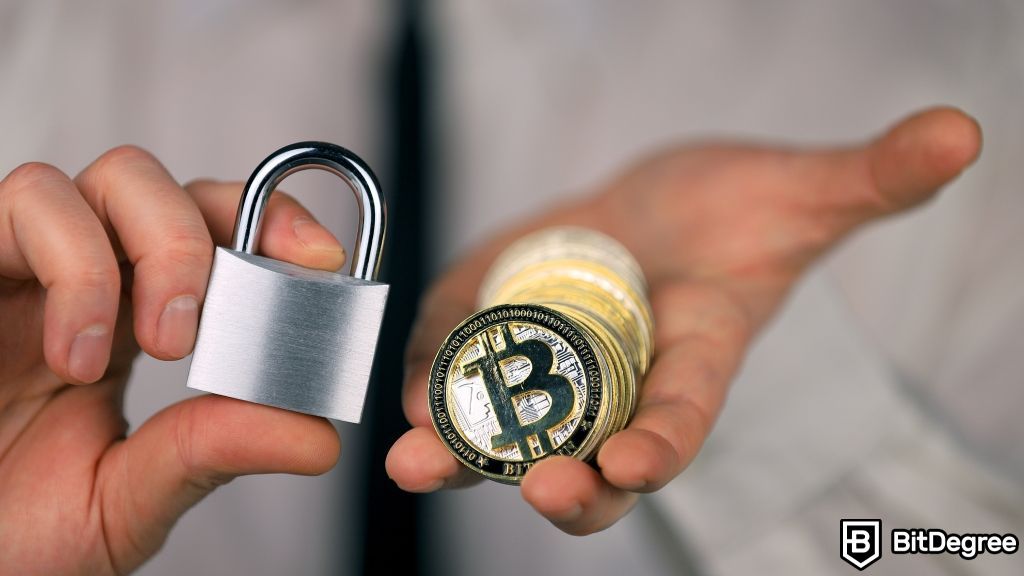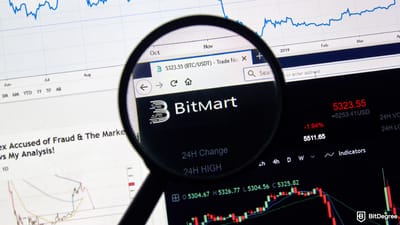Key Takeaways
- Self-custody in crypto empowers investors by giving them complete control over their assets, aligning with the decentralized ethos of cryptocurrencies;
- Utilizing trusted self-custody wallets like Ledger Nano X ensures enhanced security and privacy for your digital assets;
- Setting up self-custody solutions requires careful planning. Regular backups and a robust recovery plan are essential for safeguarding your investments.
Stop overpaying - start transferring money with Ogvio. Sign up, invite friends & grab Rewards now! 🎁
While engaging with the crypto community, you've probably read or heard the phrase "not your keys, not your coins". The idea behind it is simple: if you don't have control over the private keys of your crypto assets, you're not their true owner – and that's where crypto self-custody comes in.
If you're holding your crypto on established exchanges like Bybit and Kraken, you're in relatively safe hands because they offer robust security measures. However, you're still relying on someone else.
That said, let's talk about taking the safety of your assets into your own hands.

Did you know?
Subscribe - We publish new crypto explainer videos every week!
What is a DAO in Crypto? (Animated Explanation)


Table of Contents
- 1. What is Crypto Self-Custody?
- 1.1. Self-Custody Wallet VS Custodial Wallet
- 2. Best Self-Custody Crypto Wallets
- 2.1. Ledger
- 2.2. Zengo
- 2.3. SafePal
- 2.4. KeepKey
- 3. Setting Up a Self-Custody Solution
- 3.1. Practical Example: How to Self-Custody Bitcoin?
- 4. Integration with Decentralized Finance (DeFi)
- 5. Best Practices and Security Tips
- 6. Conclusions
What is Crypto Self-Custody?
When it comes to investing in cryptocurrencies like Bitcoin, you'll often run into the concept "self-custody". Also known as non-custodial, crypto self-custody is a critical aspect for anyone diving into the world of digital assets.
Latest Deal Active Right Now:But what exactly is it, and why is it so important?
In a nutshell, crypto self-custody means you store your own cryptocurrencies in a wallet where you, and only you, control the private keys.
And what are these precious private keys?
In the context of cryptocurrencies, private keys are like secret passwords for your digital assets. Think of them as your own personal key to unlock a digital lock. Just like you wouldn't share your house key with anyone, you should never share your private keys either.
So, it's crucial to keep your private keys safe and hidden because whoever has access to your private keys can control and access your digital stuff. Thus, remember, a private key is like a secret code that's just for you, and you should guard it like you would your most precious belongings.

That's what crypto self-custody is all about. No third-party involvement. No one can move your digital coins or tokens unless you give explicit permission, because you control the "keys" of your "financial house". In other words, crypto self-custody is essentially the digital version of holding cash or precious metals in a personal safe.
Why is crypto self-custody important, then?
First off, you have total control over your assets. Let's say you're into Bitcoin self-custody. You can send or receive Bitcoin any time you wish without needing the nod from some third party.
Next, there's the security aspect. Exchanges – especially ones that haven't been around for that long or don't put that much emphasis on security – can get hacked, or worse, go belly-up. In either case, you could lose your investments.
With self-custody, even if a cryptocurrency exchange goes down, your assets are safe and sound because you hold the keys.
Oh, and let's not forget about the importance of wallets in this matter. What is a self-custody wallet?

A self-custody wallet is, as the name suggests, a crypto wallet that allows you to keep control of your private keys and, in doing so, lets you effectively own your crypto assets. What types of wallets are there?
Understanding how to self-custody Bitcoin or any other cryptocurrency involves knowing the types of wallets you can use for this purpose. Generally, there are two primary types: software and hardware wallets.
Software wallets, like Coinbase Wallet or Zengo, are applications or programs you can install on your computer or smartphone. While they're easy to set up and use, they can be connected to the internet and stay online, making them more vulnerable to hacks.
Hardware wallets, on the other hand, are physical devices. These crypto wallets, like Ledger Nano X or SafePal, look somewhat like USB drives that store your cryptocurrency offline. This makes them much more secure against online hacks, but you have to make sure not to lose or damage the device.
After you understand what is a self-custody wallet and choose the best one for you, you can set it up and securely store your crypto. Simply provide your wallet's address to receive assets and use the recipient's address to send them away. It's a pretty straightforward process once you get the hang of it!

Just note that once you set up your wallet, you'll get something called a seed phrase. It's a series of words that act as a master key to your assets – make sure to store it somewhere super safe and super secret.
After all, while the benefits are many, crypto self-custody isn't all roses. If you lose your private keys or that essential seed phrase, your access to your assets is gone. Poof!
Of course, there are specialized crypto recovery services that might help you regain control of your funds, but they can't give you any guarantees, especially if you can't remember at least some part of your seed phrase.
In case you're curious about legit crypto recovery services – or actually in need of them (although I hope that's not the case) –, be sure to check this article.
That said, crypto self-custody offers you control, security, and privacy at the cost of increased responsibility and the need for some technical know-how.
However, what is a self-custody wallet compared to a custodial one?
Self-Custody Wallet VS Custodial Wallet
Now that you know what a self-custody wallet is, it's time to talk about how they differ from custodial wallets.
Custodial wallets, sometimes referred to as centralized wallets, often come with frills like insurance or customer support. They're generally the more user-friendly of the two types, designed to make your crypto experience as smooth as possible.
On the other hand, as you already know, a self-custody wallet allows individuals to store and manage their own cryptocurrency assets without relying on a third-party service.
| Self-Custody Wallet | Custodial Wallet |
|---|---|---|
Control over private keys | You control your private keys. | A third party controls your private keys. |
Security | More secure, but you are responsible for keeping your private keys safe. | Less secure, but the third party is responsible for keeping your funds safe. |
Privacy | More private, as you do not need to share your personal information with a third party. | Less private, as you need to share your personal information with a third party. |
Convenience | Less convenient, as you need to manage your own private keys. | More convenient, as the third party manages your private keys for you. |
Features | May offer fewer additional features. | May offer more features, such as insurance and customer support. |
Table: The comparison of self-custody wallets and custodial wallets.
The choice between self-custody and custodial wallets depends on what you value more: control and security or convenience and ease of use. So, it's all about aligning your wallet choice with your comfort level and crypto goals.
Best Self-Custody Crypto Wallets
If you're in the market for the best self-custody crypto wallet, here are some of the best options you've got: Ledger Nano X, Ledger Nano S Plus, Zengo, SafePal, and KeepKey.
When it comes to what a self-custody wallet is capable of, having a reliable crypto wallet is crucial. The aim is to blend ease of use with best-in-class security features.
Ledger
First up, we've got the Ledger Nano X, a stalwart in the hardware wallet category. This sleek device lets you store a multitude of cryptocurrencies, well over 5,500 to be exact. Besides, it protects your private keys like a digital fortress.
The Nano X also offers Bluetooth connectivity, meaning you can manage your assets via smartphone or tablet more easily than you would when connecting the wallet via a cable. Though, it is a tad costly for some – as of writing, it costs $149 (but you might find some nice deals here).
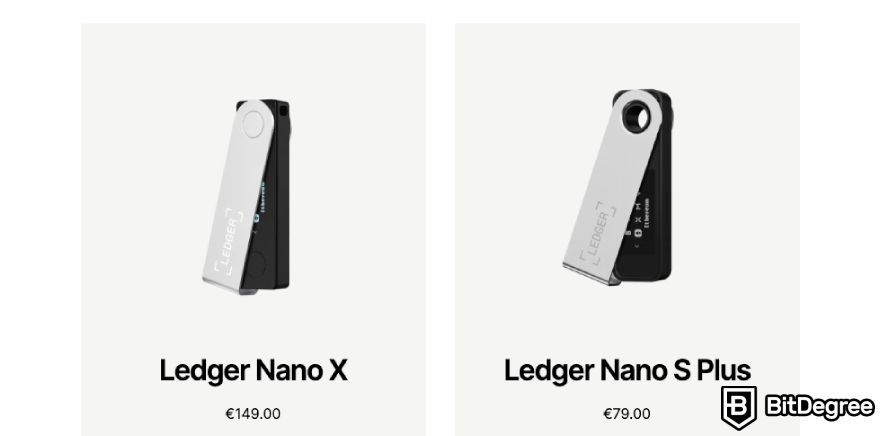
But then there is also the Ledger Nano S Plus, which is a sibling to the Nano X and doesn't disappoint either. It basically offers all the same things as the Nano X model, but it has a bit different design and no Bluetooth support.
Though, the plus point of the Ledger Nano S Plus (pun intended) is its affordability. As of writing, it costs almost half the price of the Nano X model – $79.
Zengo
Now, let's talk about Zengo, a software wallet that brings innovation to the table with its unique approach to key management. Instead of relying on a seed phrase, it uses multi-party computation to split your private keys across different servers.
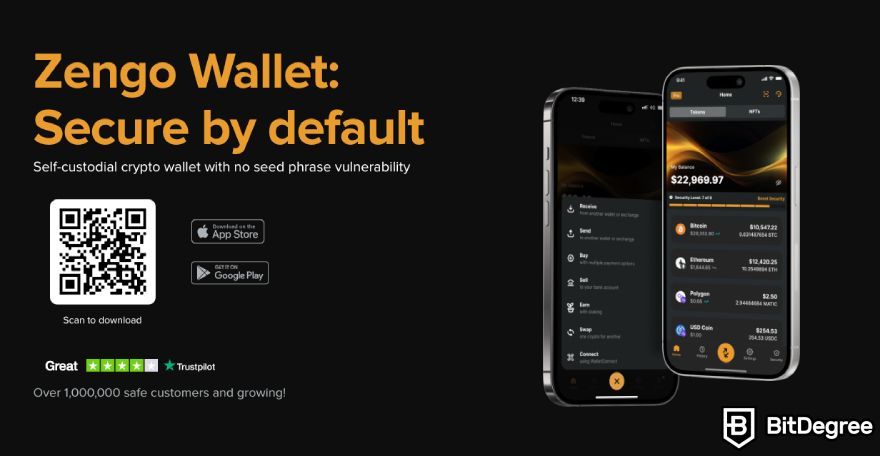
With Zengo, even if one server is compromised, your assets are safe. It's user-friendly and eliminates the vulnerabilities that come with seed phrases. By the way, it supports cryptocurrencies and NFTs from over 120 blockchains.
Since it's a software wallet, it's completely free to use; just download it on your device, and you're good to go.
SafePal
SafePal is a one-stop shop for crypto management, and it is known as one of the best self-custody crypto wallets – offering both software and hardware solutions (SafePal S1 and X1).

Whether you prefer using SafePal's device, mobile app, or browser extension, it has got you covered. SafePal supports an extensive list of over 100 blockchains, which translates to over 200,000 tokens and NFTs.
With features like cross-chain swaps and staking, SafePal is not just a wallet, but a complete asset management suite. Price-wise, the software version is free, while the SafePal S1 hardware wallet costs $49.99 (a pretty decent price in the hardware wallet industry).

Did you know?
Subscribe - We publish new crypto explainer videos every week!
How to Avoid Rug Pulls in Crypto? (5 Ways Explained)


KeepKey
Lastly, there's KeepKey. This hardware wallet is all about plug-and-play. Connect it to your device, and you're ready to manage your crypto assets.
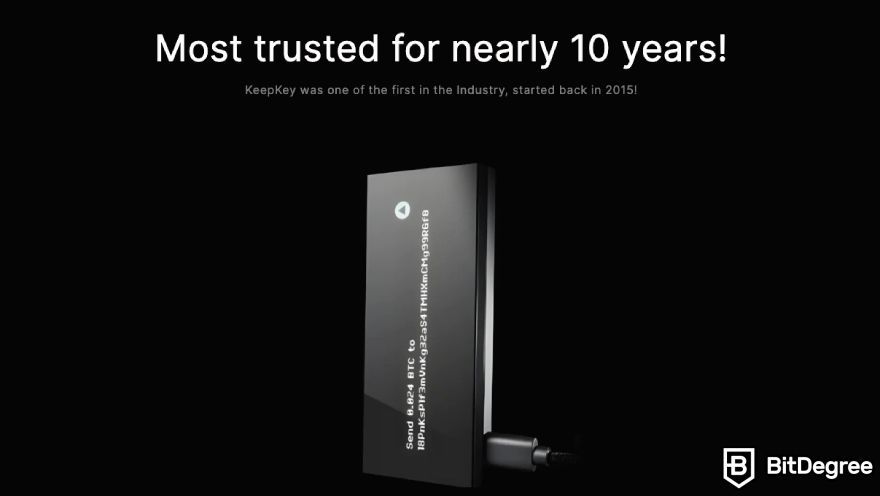
KeepKey supports over 7,000 cryptocurrencies on over 350 different chains. While it may lack some advanced features, it offers a simple and effective way to keep your assets safe. Besides, it's compatible with PC, Mac, and Linux. As of writing, it costs $78.
Each of these wallets has its own pros and cons, but what they all share is a commitment to giving you control over your crypto assets. By understanding your needs and doing a bit of research, you can pick the best self-custody crypto wallet for you.
Setting Up a Self-Custody Solution
Now, let's talk about how to set up a crypto self-custody wallet by using a specific hardware wallet to illustrate the process, which should be similar to that of other self-custody wallets.
Since there are many great options on the market, I'll talk about one of the best self-custody crypto wallets that I've mentioned: the Ledger Nano X. Although not the only option out there, it'll certainly serve as a solid example.
Step 1: After you get your Ledger Nano X, the first step is to download the Ledger Live application to your mobile device or computer. It's recommended to use devices running at least iOS 13 for Apple or Android 8.1 for optimal performance.
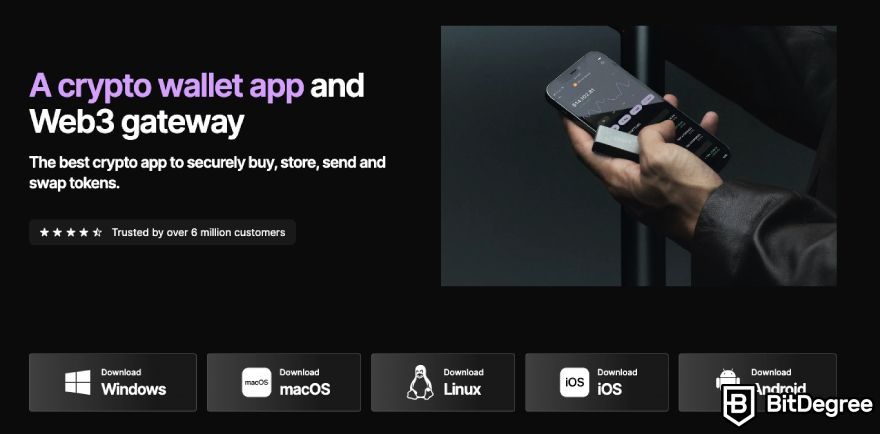
For those using a computer, the wallet supports a variety of operating systems, including Windows 10 or 11, macOS Big Sur, Monterey, and Ventura, as well as Ubuntu LTS 20.04 or 22.04, so long as they are 64-bit versions.
Step 2: Turning on your Ledger is straightforward. Press a button, and you'll see the Ledger logo appear. You'll be guided through a series of on-screen instructions to set up your device as new. This is also where you'll create your PIN code, a vital security feature. Don't rush through this, your PIN is one of the layers protecting your assets.

Step 3: You’ll also have to generate a recovery phrase, which is the heart of your Ledger Nano X, and indeed of many self-custody solutions. This is a string of 24 words that you'll write down and keep in a secure location, like a physical safe or something that works for you. Your seed phrase is the ultimate key to your digital wealth, so be sure to store it well.
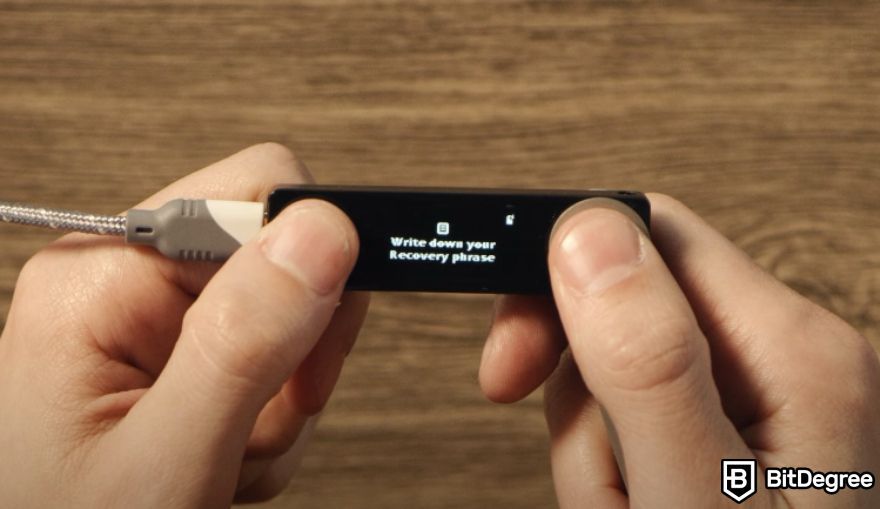
Ledger makes you confirm you've written down this phrase by asking you to enter it back into the device. It's their way of double-checking that you understand its importance.
Step 4: Once the setup process is completed, you can start depositing your crypto assets into the wallet. Remember to always lock your device when it's not in use for an added layer of security.
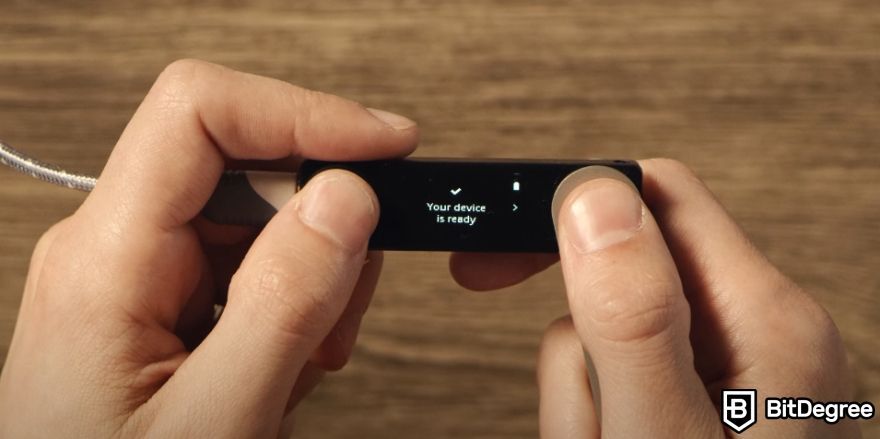
Now, whether you choose Ledger Nano X or another hardware wallet, many of these steps will be similar. The aim is to put you in full control of your own crypto assets, securely and efficiently.
That's a snapshot of what setting up a self-custody solution looks like, using Ledger Nano X as an example. This hands-on approach gives you the control you desire over your crypto investments. Take your time to explore your options and decide what's best for you.

- Secure and reliable
- Accepts fiat currencies
- Lots of trading options
- Reputable exchange
- Accepts fiat currencies
- Offers various trading options

- Huge trading variety
- Regulation-compliant around the globe
- Fair trading fees
- Beginner-friendly
- A wide array of features
- Vast number of different crypto coins & tokens

- Beginner-friendly
- Secure
- Decent trading and withdrawal fees
- Crypto.com Visa Card
- Automated tools & bots
- Ecosystem synergy with CRO
Practical Example: How to Self-Custody Bitcoin?
Now, let's say you want to know how to self-custody Bitcoin. Assuming you've chosen the Ledger Nano X as your hardware wallet, I'll walk you through the process of moving your Bitcoin from a centralized exchange to your new, ultra-secure, personal vault.
Step 1: Connect your Ledger Nano X to your computer or mobile device. Unlock it using your PIN and navigate to the Bitcoin app on the device. If you haven't installed it yet, you can do so via the Ledger Live app.
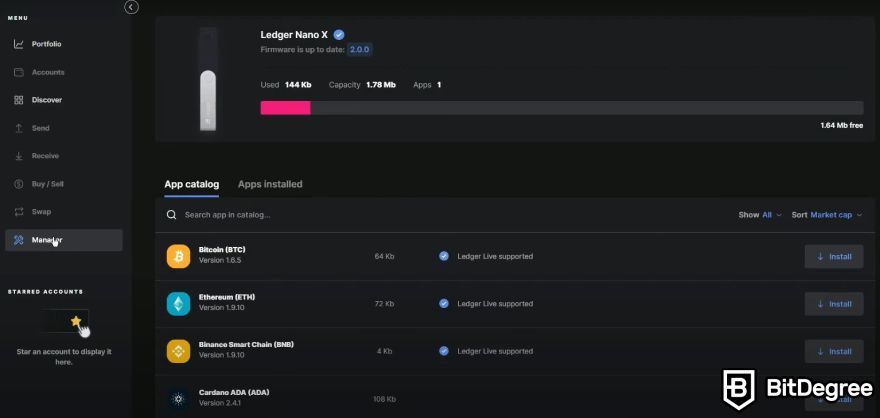
Step 2: On Ledger Live, click on the [Receive] option and choose Bitcoin from the list of assets. The app will generate a QR code and a corresponding Bitcoin address. This address is like your bank account number, but specifically for Bitcoin.
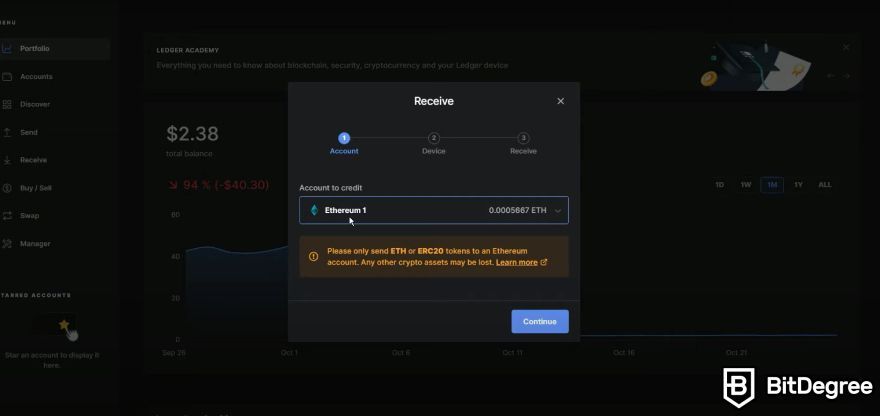
Step 3: Now, shift your focus back to the exchange account where your Bitcoin is currently stored (I'll use Binance for this example). Navigate to your wallet on the platform and look for a [Withdraw] option. You'll need to select Bitcoin as the currency you'd like to withdraw.
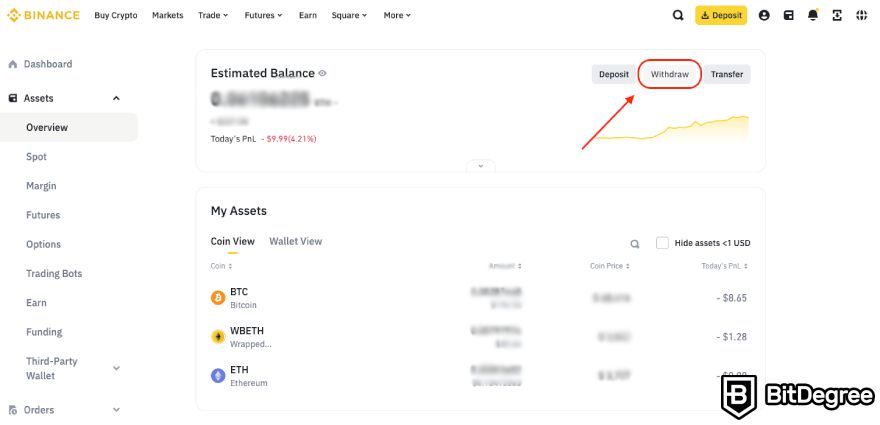
Step 4: Once you've selected Bitcoin for withdrawal, you'll be prompted to enter the withdrawal address. This is where you paste or scan the Bitcoin address that Ledger Live generated for you. Make sure to double-check the address, as you definitely don't want to send your Bitcoin into the void.
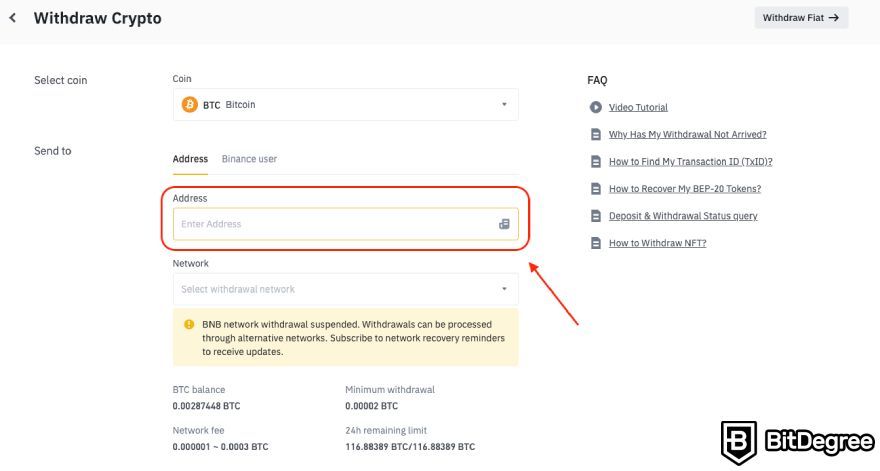
After having verified the address, go ahead and initiate the withdrawal. Exchanges usually have a review process, so it might take a moment for the transaction to be confirmed. However, once it's done, the Bitcoin will be moved from the exchange to your Ledger Nano X.
I hope this practical example serves as a clear guide for you to transition from keeping your Bitcoin on an exchange to genuinely taking ownership of it through Bitcoin self-custody. After all, learning how to self-custody Bitcoin offers you not just freedom but also peace of mind.
Integration with Decentralized Finance (DeFi)
As you delve into the world of crypto self-custody, another exhilarating frontier opens up: decentralized finance, commonly known as DeFi. Here, self-custody serves as your gateway to a plethora of financial services that operate without the need for traditional banking systems or intermediaries.
Within DeFi platforms, you can lend your crypto assets to earn interest, borrow assets against your existing holdings, and even engage in yield farming to optimize your returns[1]. Let's explore how this ties in with self-custody.
One of the remarkable aspects of DeFi is that it's built on the principles of transparency and decentralization, mirroring the ethos of crypto self-custody. By holding your own private keys, you can directly interact with smart contracts on various blockchains. This offers not just a sense of ownership but also flexibility.
As you hold your own keys, you can switch between different DeFi services effortlessly. There's no need to transfer assets from one centralized platform to another. Everything is accessible right from your self-custody wallet.
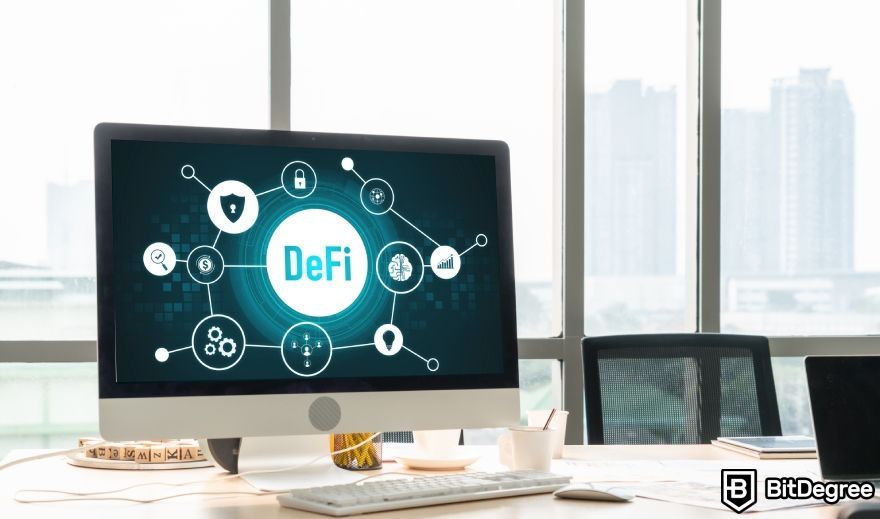
However, diving into DeFi through self-custody has challenges. The DeFi landscape is complex and volatile, and many smart contracts are unaudited[2]. This exposes your assets to risks like hacks or coding bugs.
Despite these challenges, though, the advantages of integrating DeFi services into your self-custody setup are hard to overlook. Not only does this combination give you full control over your financial destiny, but it also provides unprecedented opportunities for financial growth and diversification.
So, as you continue your journey in crypto self-custody, consider extending your reach into the DeFi realm. By doing so, you leverage the true power of decentralization, inviting greater financial freedom and opportunity into your life. Just make sure to DYOR before engaging with any services.
Best Practices and Security Tips
So, you've set up your crypto self-custody wallet, picked out your preferred hardware, and maybe even tried out how Bitcoin self-custody feels like. Good job, but don't rest on your laurels just yet.
Safeguarding your digital assets involves ongoing diligence. With cyber threats evolving by the minute, staying a step ahead is your best line of defense. Besides, don't forget that self-custody means you're the custodian, security guard, and vault manager all rolled into one. With that in mind, let's get into some best practices and security tips.
✓ Store Your Recovery Seed Securely
I know I've already emphasized this, but it bears repeating in a new light. Store that seed phrase in a fireproof safe or a safety deposit box. Somewhere ultra-secure and far away from your physical wallet. Some even go the extra mile to create redundancy by storing copies in multiple secure locations.
✓ Update Your Wallet
It may seem like a chore, but keeping your wallet's software up-to-date is a critical security measure.
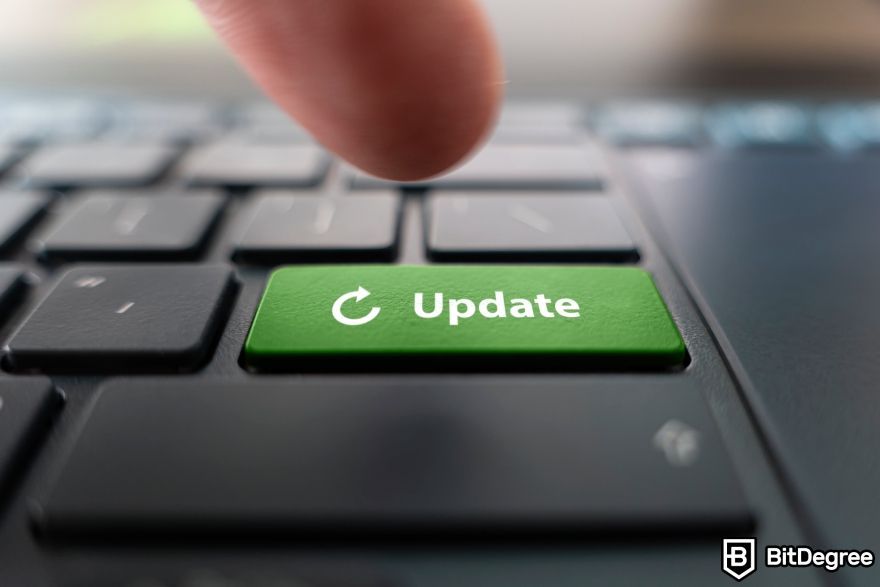
New updates often include patches for vulnerabilities that could otherwise be exploited. It's like getting a new set of locks for your digital vault, making it harder for intruders to break in.
✓ Consider Dedicating a Device to Crypto
Security doesn't end with the wallet itself, though. Consider using a dedicated computer or mobile device solely for your crypto transactions. This minimizes the risk of malware or spyware compromise. Run regular scans for malicious software and use a reliable antivirus. Even on that dedicated device.
✓ Consider Using a VPN
For an added layer of security, consider a VPN if that's allowed in your jurisdiction. A virtual private network masks your IP address and encrypts your internet connection, adding an extra hurdle for would-be attackers. While this won't make you invincible, it certainly ups the ante for anyone trying to compromise your assets.
✓ Avoid Public WiFi
Oh, and don't forget to steer clear of (or, at least, be very cautious with) public WiFi connections. Yes, that free Wi-Fi at your favorite coffee shop is convenient, but it's not the place to check on your crypto balances or make transactions.
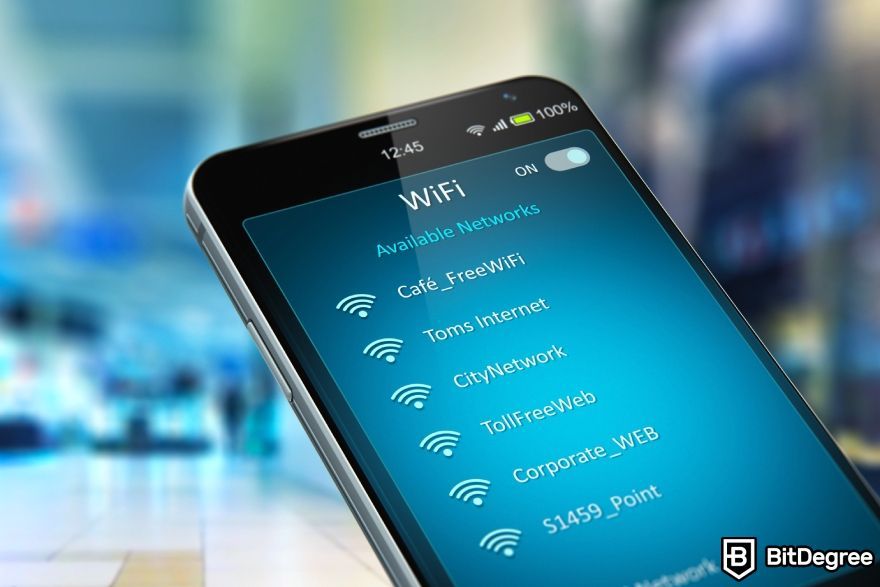
Public networks are more susceptible to man-in-the-middle attacks, so stick to secure, private networks for all things crypto.
✓ Double-Check Everything
Now, there also is the human factor, which should never be taken lightly. Social engineering attacks, like phishing scams, are on the rise. Always double-check the URLs and email addresses involved in any crypto transaction. Scammers often use web addresses that look almost identical to the real ones. One wrong click could mean saying goodbye to your assets[3].
✓ Set a Recovery Plan
Also, last but not least, let's talk about a practice that's often overlooked – disaster recovery. What happens if you're incapacitated, or God forbid, you pass away? Make sure to have a solid plan that allows your loved ones to access your assets without compromising security.
Mastering the art of self-custody is an ongoing process that takes a blend of technological vigilance and good old-fashioned common sense. It offers incredible benefits but requires a solid commitment to best practices and continued education in security measures.
Conclusions
I hope after reading this article on crypto self-custody you're well-equipped to take control of your crypto assets like a pro. It may seem a bit daunting at first, but remember, the freedom and security you get with self-custody are well worth the initial learning curve.
When it comes to picking the best self-custody wallet, be it a sturdy hardware wallet (like Ledger Nano X or SafePal) or a secure non-custodial software wallet (like Coinbase Wallet or Zengo), it's crucial to DYOR and make sure it aligns with both your investment strategy and technical know-how.
Setting up a self-custody solution for your crypto might seem like a complicated process, but once you get the hang of it, you'll see that it's very easy. So, go ahead, implement what you've learned, and thrive in your crypto journey!
The content published on this website is not aimed to give any kind of financial, investment, trading, or any other form of advice. BitDegree.org does not endorse or suggest you to buy, sell or hold any kind of cryptocurrency. Before making financial investment decisions, do consult your financial advisor.
Scientific References
1. J. Jensen, V. Wachter, O. Ross: 'An Introduction to Decentralized Finance (DeFi)';
2. S. Werner, D. Perez, L. Gudgeon, et al.: 'SoK: Decentralized Finance (DeFi)';
3. A. Aleroud, L. Zhou: 'Phishing environments, techniques, and countermeasures: A survey'.
